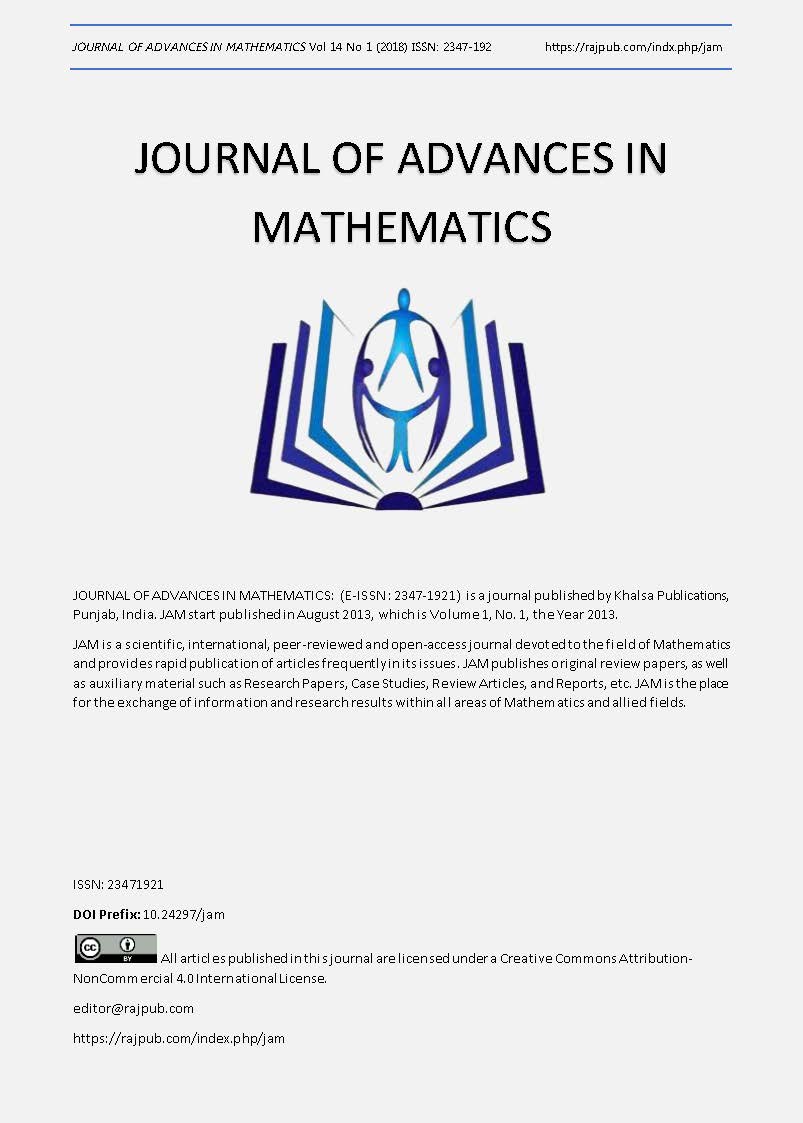Median Double Ranked Set Sampling Method
DOI:
https://doi.org/10.24297/jam.v14i1.7173Keywords:
Ranked set sampling, Median ranked set sampling, Double ranked set sampling, Relative precisionAbstract
In environmental monitoring and assessment, the main focus is to achieve observational economy and to collect data with unbiased, efficient and cost-effective sampling methods. Ranked set sampling (RSS) is one traditional method that is mostly used for accomplishing observational economy. In this article, we suggested new sampling method called median double ranked set sampling (MDRSS). The newly suggested sampling method MDRSS is compare to the simple random sampling (SRS), RSS, double ranked set sampling (DRSS), median ranked set sampling (MRSS). When the underlying distributions are symmetric and asymmetric, it is shown that, the variance of the mean estimator under MDRSS is always less than the variance of the mean estimator based on SRS and the other methods.
Downloads
References
Balakrishnan, N., and Chen, W.W. 1997. CRC Handbook of Tables for Order Statistics from Inverse Gussian Distributions with Applications, CRC Press, Boca Raton.
Dell, T. R. and Clutter, J. L. 1972. Ranked set sampling theory with order statistics background. Biometrics 28, 545 -555.
Haq, A., Brown, J., Moltchanova, E., and Al-Omari, A. I. 2013. Partial ranked set sampling design. Environ metrics 24, 201-207.
Haq, A., Brown, J., Moltchanova, E., and Al-Omari, A. I. 2016. Paired double-ranked set sampling. Communications in Statistics - Theory and Methods 10, 2873-2889.
Harter, H. L. and Balakrishnan, N. 1996.CRC Handbook of Tables for the use of Order Statistics in Estimation. CRC Press, Boca Raton.
McIntyre, G. A. 1952. A method of unbiased selective sampling, using ranked sets. Australian J. Agricultural Research 3, 385-390.
Muttlak, H. A. 1997. Median ranked set sampling. Journal of Applied Statistical Sciences 6, 245-255.
Muttlak, H. A. 1998. Median ranked set sampling with concomitant variables and a comparison with ranked set sampling and regression estimator. Environmetrics 9, 255-267.
Patil, G. P., Sinha, A. K., Taillie, C. 1993. Relative precision of ranked set sampling: Comparison with the regression estimator. Environmetrics 4, 399-412.
Richard, S. L., Dennis, W.,and William, M. 2008. Mathematical Statistics with Applications. 7^thed. Thomson Higher Education. USE.
Samawi, H. M. 2011. Varied set size ranked set sampling with applications to mean and ratio estimation. The International Journal of Simulation Modeling 31, 6–13.
Samawi, H. M., and Muttlak, H. A. 1996. Estimation of Ratio Using Rank Set Sampling. Biometrical Journal 38, 753 -764.
Takahasi, K. and Wakimoto, K. 1968. On unbiased estimates of the population mean based on the sample stratified by means of ordering. Annals of the Institute of Statistical Mathematics 20, 1-31.
Downloads
Published
How to Cite
Issue
Section
License
 All articles published in Journal of Advances in Linguistics are licensed under a Creative Commons Attribution 4.0 International License.
All articles published in Journal of Advances in Linguistics are licensed under a Creative Commons Attribution 4.0 International License.








